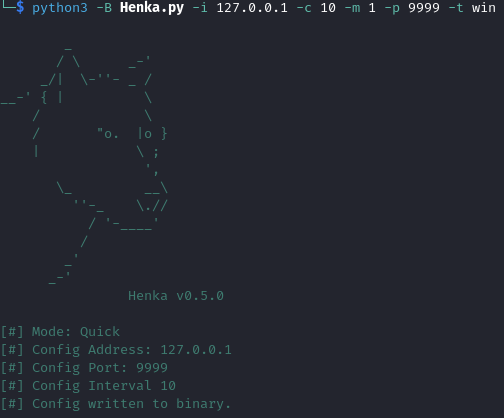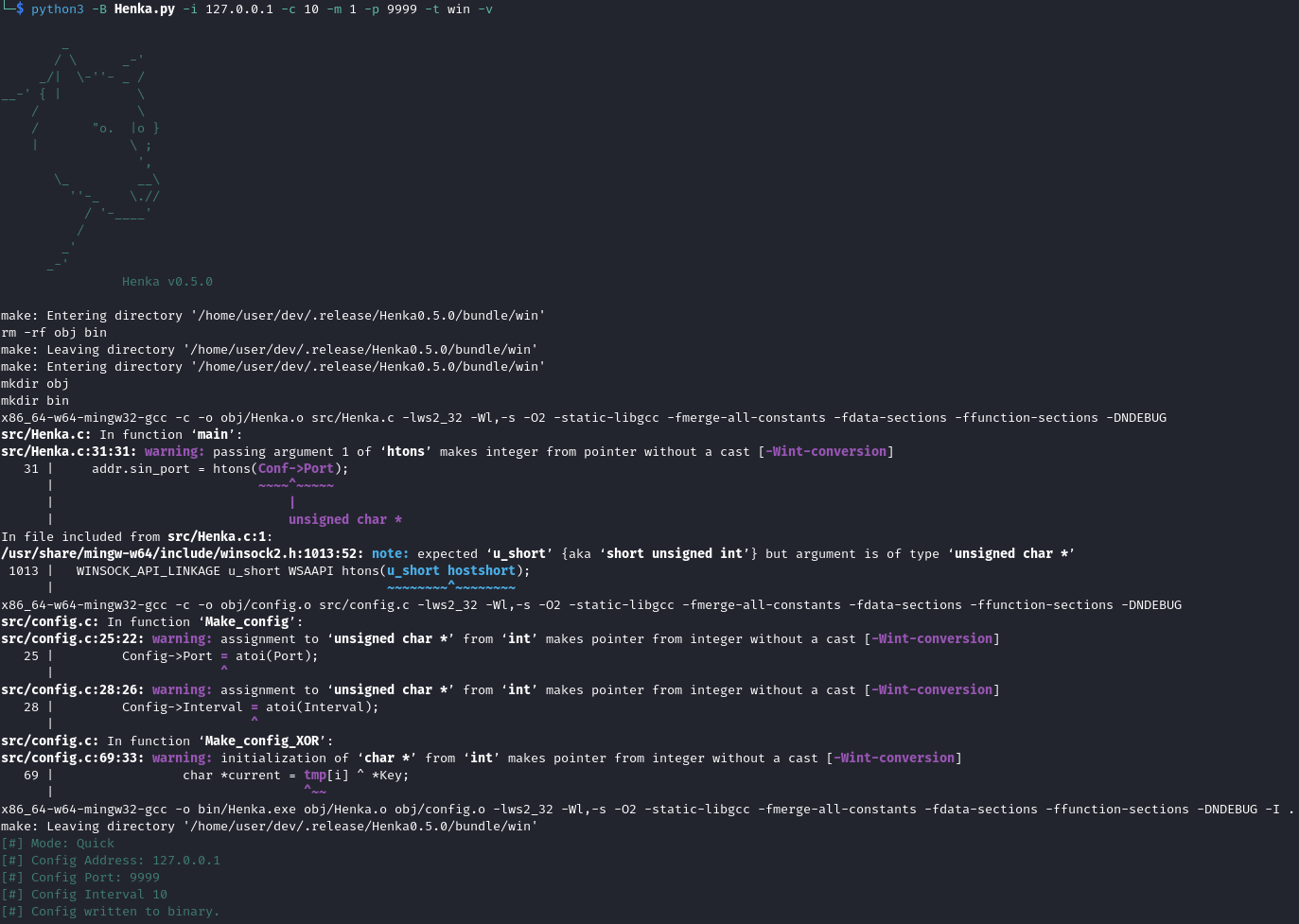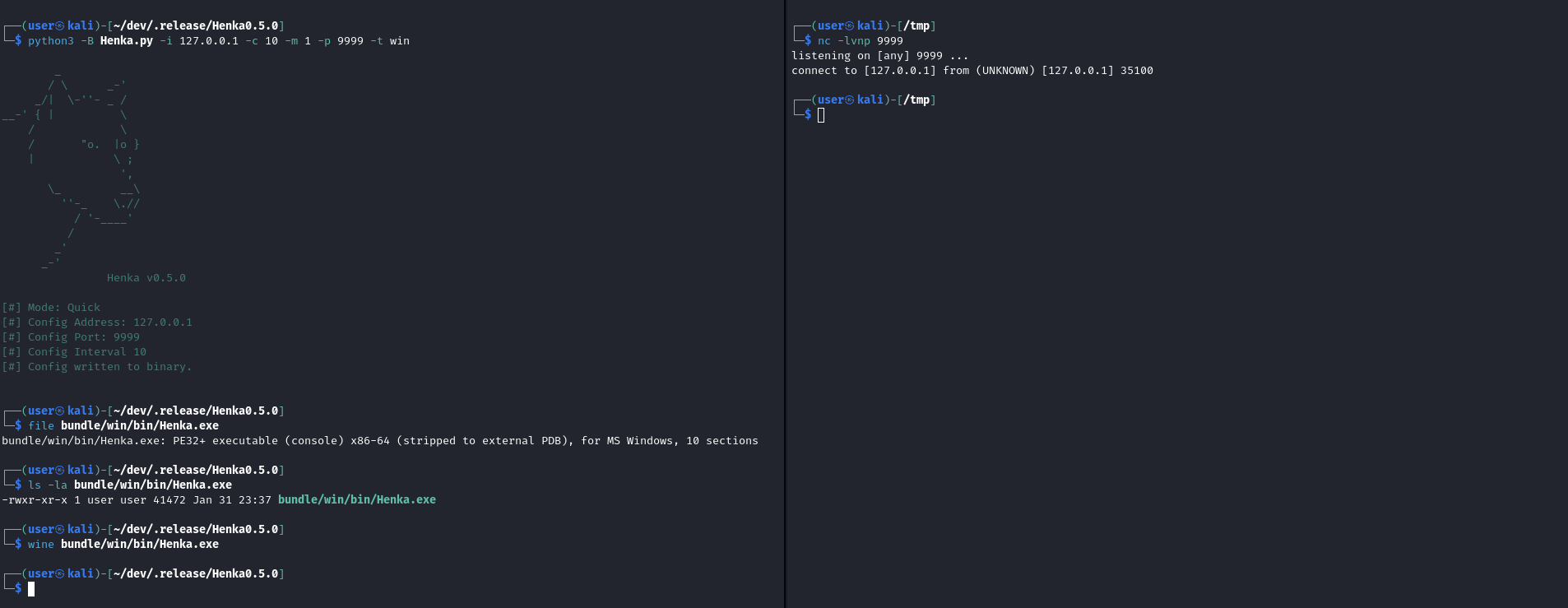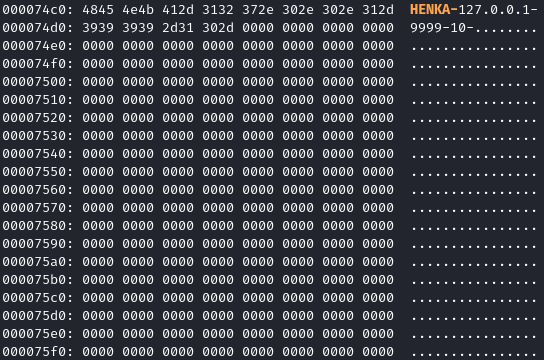Henka In-depth! Part 1
Intro
Several months ago, I watched a video by Ippsec. The video focused on creating a program capable of interchanging values within a config embedded in a binary. With this program, we can modify where our binaries connect back without needing access to the source code.
Demo
Seeing the full functionality first is a good place to start. Then we will look at the code so you can understand how it works.
Henka
Start simple
python3 -B Henka.py -i 127.0.0.1 -c 10 -m 1 -p 9999 -t win

I like to remember the arguments as ICMP
- [-i] Ip to callback to
- [-c] How often you want your binary to callback in seconds
-
[-m] The mode of encryption you want for the config
- 1: No encryption
- 2: XOR encryption
- 3: AES encryption
- [-p] Port you want to callback on
- [-t] Machine type win or unx
- There’s also -v option for verbose output

Source
The source code for Henka.py isn’t anything you should really focus on but I will go over the important parts if you would like to read the code yourself go for it!
Here you can see what’s really going on under the hood. Henka compiles the binary based on the supplied -t option. On line 91 we are taking the arguments from cli and passing them to our patch function residing in the Quick class in which we will touch later on.
- Lines 68-97
elif args.t == "win":
if args.v:
make = os.system("make -C bundle/win/ clean") # verbose
make = os.system("make -C bundle/win/") # verbose
else:
make = os.system("make -C bundle/win/ clean > /dev/null 2>&1") # silent
make = os.system("make -C bundle/win/ > /dev/null 2>&1") # silent
else:
print(dim + red + "Invalid mode.")
exit(0)
match args.m:
case 1:
Q = Quick(args.i, args.p, args.c)
try:
Q.patch()
print(dim + gre + "[#] Config written to binary.\n")
exit(0)
except Exception as e:
print(dim + red + "[#] Could not patch file.")
exit(0)
After you run the above command you will find the compiled binary in
bundle/_/bin/
_ being your choice of machine type
Bin
After you have located your binary in the previously stated path you can transfer and run it however you like, I will be using wine for this demo.
You may be wondering why I am compiling windows programs on linux and running them aswell? The simple answer is I just really really really don’t feel like having to boot up a vm sometimes. Thank the lord for wine right ;)
- Binary connecting back on port 9999

Now that you have a vague understanding of what the program is doing lets go deeper.
In-depth
Taking a look at the binary with xxd we will find a very important piece of the puzzle. Every aspect of this python program is built around the config buffer inside of the binary
I chose to start my config buffer with the characters “HENKA-“
static unsigned char CBUFF[50] = "HENKA-";
- How the buffer looks after we made the config
xxd bundle/win/bin/Henka.exe | less

or
xxd bundle/win/bin/Henka.exe | grep -i "HENKA-"

Here you may start to see where we are going with this but if you aren’t following I’ll explain. Each time we run Henka.py it will compile a new binary, each time we compile we’re also placing the config at a specific offset (will explain later) in the binary. An offset is basically how far something is from the start of a file or an array.
Next post
In the next post we will
- Read the file as bytes.
- Find the offset to the start of the config.
- Place the config in the static buffer so our binary can read the values.